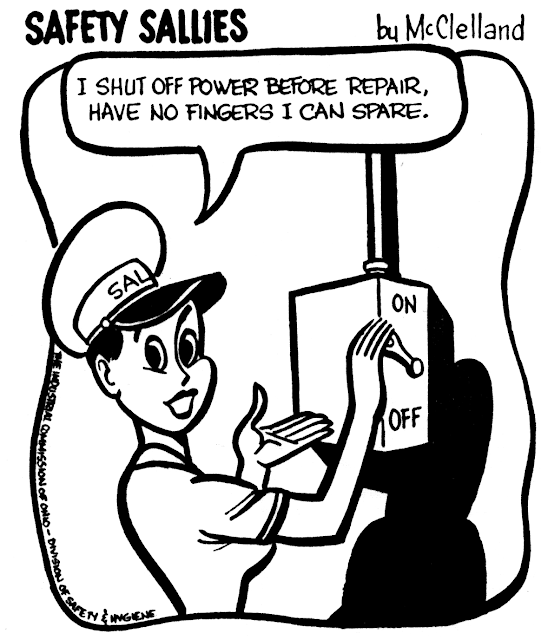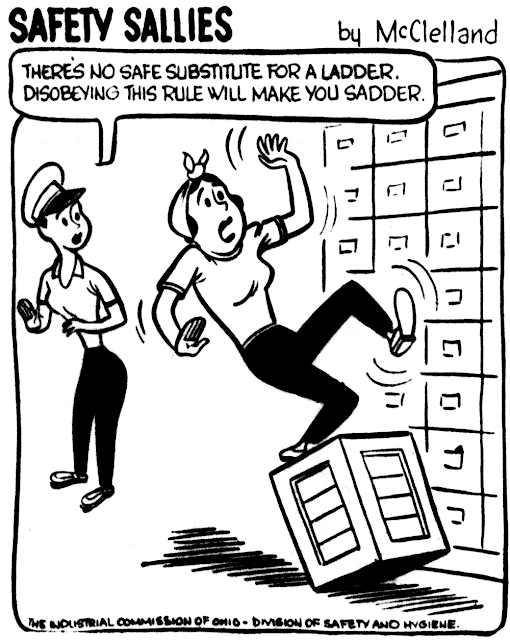Saturday, July 16, 2022
Herriman Saturday: April 13 1910
April 13 1910 -- What!? A boxing cartoon NOT about the upcoming Johnson-Jeffries fight? Yes, believe it or not, the rest of the boxing world is not at a complete standstill while awaiting the Fight of the Century.
Tomorrow night Sam Langford will face off, yet again, with Jim Barry. These guys have spent so much time in the ring together you'd think they were a wrestling tag team, not boxing opponents. And as Herriman indicates in his strip above, Langford keeps beating him, but Barry just keps coming back for more punishment.
So how will this latest bout turn out? The smart money has Langford with a knockout in the 16th round.
Labels: Herriman's LA Examiner Cartoons
Friday, July 15, 2022
Obscurity of the Day: Arnold
Bill Johnson was attending the University of Minnesota in 1952 when he began contributing a comic strip titled Arnold to the campus newspaper. The strip featured a little everyman-type, Arnold, whose comic foil was Otis Krayola, a half-witted hepcat. The strip offered little in the way of actual gags, opting instead for satirical discussions and snide commentary about modern life. It was Feiffer-esque before that was even a thing.
In 1954 the strip was picked up for syndication by the Associated Collegiate Press, and claimed to eventually be appearing in over 200 college publications. Johnson continued the strip after he left university life, keeping it going as he pursued a career in writing. Finally the big-time came calling, when the Hall Syndicate offered to syndicate him to mainstream papers. By now, though, Johnson was employed as a writer on the Minneapolis Tribune, so a daily strip must have seemed too much work. Instead Arnold was introduced as a Sunday-only feature, debuting on January 8 1961*.
The strip didn't by any means set the newspaper world on fire, even though it sported delightful art and would, in theory, appeal to the coveted college-educated 18-40 age group. But the strip's lack of focus on gags evidently made it a harder sell than Hall Syndicate expected. Johnson saw that his future was brighter as a writer than as a comic stripper, and Arnold was abruptly cancelled after just nine months, last appearing on September 3 1961*.
Source: Minneapolis Tribune
Labels: Obscurities
Wednesday, July 13, 2022
Selling It: Safety Sallies
Industrial workplace safety seems an odd topic for a newspaper cartoon, but apparently the Division of Safety and Hygiene of the Industrial Commission of Ohio (phew!) felt the need to produce them, and a few Ohio papers deemed them worthy of unpaid space. The earliest I find Safety Sallies running is August 1958*, and the latest is March 1960**. I've documented over 20 different panels, but no paper I know of ran them consistently or often enough to get any feeling for how many were likely produced, whether there were multiple series of them provided to papers, or if there was an intended frequency of appearance.
What I do know is that artist Leland S. McClelland shows off some of the most sumptuous inking work you're ever going to set your peepers on in these masterfully done panels. Which is odd, because McClelland did not usually draw using such a flamboyant brush -- he typically went for a more realistic look to his cartoons, and even when he went full-on bigfoot, it was generally less exuberant than this.
McClelland produced a long-running local interest Sunday page for the Columbus Citizen called Cartoon Parade, which I'd love to feature here if I can ever get hold of some hardcopy samples. The Safety Sallies series was produced as that feature was in its waning days. McClelland is known to have worked at the Byer & Bowman ad agency around this time, and that's probably how he came to produce this very obscure but wonderful series.
* Source: New Philadelphia Daily Times
** Source: Lancaster Eagle-Gazette
Labels: Public Service Features
Monday, July 11, 2022
Obscurity of the Day: Bug-House Records
Here's an instance of a weekday strip which was demonstrably produced with syndication in mind as well as the home paper. According to Jeffrey Lindenblatt's index of the New York American, Hearst's flagship paper, Jimmy Swinnerton produced four episodes of Bug-House Records from December 22 to 30 1915. Yet if I check papers around the country, I can come up with a total of five episodes in the series. In other words, one of those episodes did not make it into the home paper of the Hearst chain.
By the 1920s, big syndicators like Hearst and Pulitzer would be producing lots of weekday/daily material primarily for syndication, but in the 1910s that practice was still uncommon enough to surprise me a little when I find an example. Granted, in this case the home paper missed only a single episode of a short-lived series, but it wouldn't be long before the profitability of syndication would make the big chains produce lots of material that would never see the light of day in their hometowns.
Labels: Obscurities
Sunday, July 10, 2022
Wish You Were Here, from Fred Opper
Another card from the 1906 Hearst's Sunday paper freebies, that we've dubbed the Li'l Arsonist series for the method by which a hidden picture is revealed.
Here we have a card that actually would have held a surprise for the kids when the hidden figures were revealed, except that Opper drew a kid off to the side pretty much giving away the gag. Thanks Fred.
Fun fact: Hearst Sunday newspaper readers were expected to cut these postcards out from a sheet. This paper was obviously purchased by someone who read the paper after one too many glasses of beer.
Labels: Wish You Were Here

%2006-18-1961.jpg)
%2006-11-1961.jpg)
%2004-23-1961.jpg)






